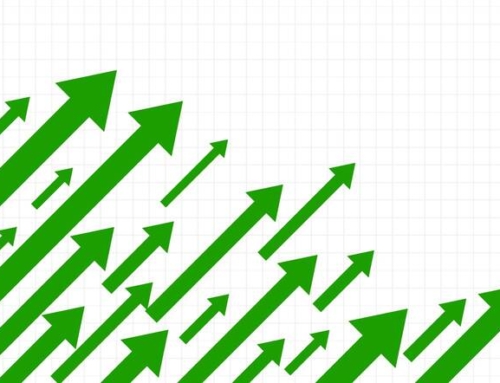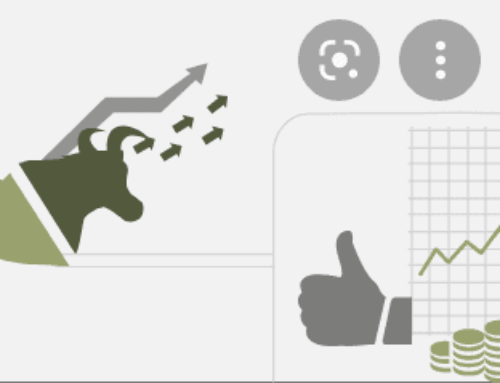What is the Dollar Index?
Introduction: –
In this video, we will learn a very important topic and that is the Dollar Index.
So, if you’re an active trader or an active investor, please watch the video very carefully till the end because we will discuss:
- What is the Dollar Index?
- How is it calculated?
- Its impact on the Indian stock market…What happens to the Indian stock market when the DI goes up or when it comes down?
Let’s start first with the basic question:
What is the Dollar Index?
Dollar Index measures the relative value of the US Dollar with respect to the currencies of the major trading partners of the US.
So, who are the major trading partners for the US?
Well, the big ones are the countries in the Eurozone, Japan, Canada, Great Britain, Switzerland, and Sweden.
The U.S. dollar index (USDX) measures how strong or weak the US dollar is as compared to the currencies of these countries. So, basically on one side, we have the US dollar and on the other, we have these 6 currencies: Euro (EUR), Japanese yen (JPY), Canadian dollar (CAD), British pound (GBP), Swedish krona (SEK), and Swiss franc (CHF)
Each of these currencies has been given a different weightage depending on their trading volume with the United States. The Euro is, by far, the largest component of the index, making up almost 60% percent (officially 57.6%) of the basket.
The index was created back in 1973 with a base value of 100, and values since then are relative to this base. Interestingly, the contents of the basket of currencies have only been changed once since the index started…back in 1999, when the Euro replaced many European currencies including Germany’s previous currency.
But the trading of the United States has changed significantly over the last 2 decades…because US does much more trading with China and Mexico than some of the countries mentioned.
So, it is quite possible that some currencies will be replaced by Chinese Yuan and Mexican Peso.
You can track the value of the Dollar Index from Investing.com and check its history.
Now, the U.S. dollar index has risen and fallen sharply throughout its history, reaching its high point in February 1985 with an index value of 164.72 and its low point in March 2008 during the Lehman crisis, with a value of 70.698.
Currently, the index carried a value of 95.45, meaning that the U.S. dollar has depreciated versus the basket of currencies since 1985 but is roughly equal to its starting value in 1973.
Factors affecting the Dollar Index
There are many macroeconomic factors that affect the Dollar index…Trade imbalances among these countries, market sentiment, Policies set by the US FEd reserve, as well as recessions and economic growth in those countries.
I think that’s not something we should worry about and only be bothered what impacts us as traders.
What is the impact of the Dollar Index on the Indian markets?
To understand the impact, we have 2 categories of companies: importing and exporting.
Importing companies import their raw materials from outside and for that they have to make the payment in the US dollars. Therefore, when the Dollar Index goes up, they have to spend more rupees in order to buy the same amount of raw materials, right? Therefore, a rise in Dollar Index is considered negative for the stock of these companies.
Generally, we see that the stocks of sectors such as banks, capital goods, oil, and gas, which are more focused on domestic consumption will fall.
On the other hand, stocks of export-oriented sectors such as IT, Pharma, etc will benefit when the USDX rises. This is because these companies get paid in US Dollars but report their earnings in Indian rupees. So, for the same dollar revenue, these companies report a higher revenue and hence it’s considered positive for stocks of such companies.
But all said and done, there is one thing to keep in mind. Just because the Dollar Index is going up or down does not mean that our own market will go up or down. It is just another factor to consider in our analysis.
Indian equity markets are generally impacted only from a short-term perspective because of the Dollar Index.
So, guys, this is the end of the video and I hope you liked it and understood the fact that every term in the market has its significance, however strange it might sound in the beginning.
If you want to test your understanding on this topic and several other, please try our quizzes on our website, the link for which is mentioned below.
 What is it?
What is it?
Under the peak margin rule imposed by SEBI, traders are required to give 100 percent margin upfront for their trades. This, experts feel, will severely impact intraday trades. It may also be noted that Sebi introduced new margin rules a year ago for day traders.
Under the new peak margin norms, stockbrokers are required to collect minimum margins on leverage-based trade upfront, compared to the earlier practice of collecting it at the end of the day.
Sebi had decided to introduce the peak margin norms last year in order to curb speculative trading and restrict leverages offered by stockbrokers to their clients.
After the new norms were announced, stockbrokers stopped using end-of-day positions to calculate margin requirements and shifted to using intraday peak positions from December 2020.
Under these new norms, Clearing Corporations will seek minimum margin throughout the session and force brokers to collect additional margin from clients if they fall short. Stockbrokers who fail to do so will face a penalty.
As a risk mitigation measure, additional leverage will also be restricted and stockbrokers will be penalised if leverage offered to clients exceed VaR + ELM and standardised portfolio analysis risk for derivatives positions.
Stockbrokers will also face a penalty if margins collected from traders is less than 100 per cent of trade value in the case of cash market stocks and an additional Span + Exposure for derivatives trade.
SPAN Margin is the minimum requisite margins blocked for futures and option writing positions as per the exchange’s mandate.
The ‘Exposure Margin’ is the margin blocked over and above the SPAN to cushion for any MTM (Marked-to-market) losses.
Both the SPAN and Exposure margins are specified by the exchange. So at the time of initiating a futures trade, the client has to adhere to the initial margin requirement. The entire initial margin (SPAN + Exposure) is blocked by the exchange.
As per the new peak margin norms, the margin requirements will be calculated 4 times during every trading session. It will also include intraday trading positions.
Traders will now have to park more cash towards fulfilling margin requirements for trade. In fact, trading in futures and options (F&O) will also become more expensive.
Earlier, stockbrokers’ association ANMI had termed the market regulator’s new peak margin rule as unfair and it had even urged Sebi to reconsider its peak margin norms, especially related to intra-day trading.
Traders too are dejected with the new rule as they will have to cough up more money to bet in the stock market, especially for intraday and futures trades. Further, traders will also have to pay a penalty if the peak margin norms are not followed during a trading session.
Zerodha has a page on their website to find out the SPAN & Exposure margin required for a futures position or short option.
As per SEBI regulations, margin shortfall penalty is levied on trades performed without sufficient margin (SPAN & Exposure for F&O and VAR+ELM+Adhoc for equity), net buy premium, physical delivery margins and marked to market losses (if applicable) as prescribed by the exchange.
The charges imposed are given below.
| Short collection for each client | Penalty percentage |
| (< Rs 1 lakh) And (< 10% of applicable margin) | 0.5% |
| (= Rs 1 lakh) Or (= 10% of applicable margin) | 1.0% |
To understand why a penalty is levied, we will have to first understand about the Settlement cycle and the concept of Margin reporting in India.
The settlement cycle in India for Equities is T+2 and for F&Os, it is T+1. When you sell Equities and receive money as sale proceeds, such sale proceeds can be withdrawn only on T+2 day.
If you sold stocks worth Rs.1,00,000 on Monday, you would be able to withdraw these funds only on Wednesday. Monday would be taken as T-Day, Tuesday would be T+1 Day and Wednesday would be T+2 Day). Similarly when you sell F&O positions you would be able to withdraw these funds on T+1 day only.
The thing to be noted here is that when you sell an Equity position or an F&O position, only on the respective settlement day the funds become yours and you can use them. From the time you sell till the time it is settled, they would be considered as “Encumbered funds”.
Margin Reporting: When you take a position in the F&O Segment, the Exchange requires all brokers to report the funds available for such positions taken by client on a client to client level.
If you buy Nifty Options for ₹ 10 Lakhs, the Exchange would ask your broker of the availability of funds in your account and report the same to the Exchange. While reporting the availability of funds, your broker is required to consider only ‘free’ or ‘unencumbered’ balance. Any short reporting will attract a penalty. If your broker allows you to buy options worth ₹ 10,00,000 with only ₹ 6,00,000 in your account, the shortage in your account would be ₹ 4,00,000 on which a penalty is levied.
Why the restriction on intraday leverages?
Peak margin reporting was introduced to restrict brokers from providing additional leverage over and above what VAR+ELM ( with minimum 20% for stocks) and SPAN + Exposure (F&O – Equity, Commodity, Currency) already being offered.
Effective Dec 1st, 2020, the maximum intraday leverage offered by a broker has been restricted and this maximum leverage kept reducing until 01st Sep 2021 post which a broker could give maximum leverage = VAR+ELM(min 20%) or SPAN+Exposure.
- Dec 2020 to Feb 2021 — penalty if margin blocked is less than 25% of the minimum and 20% of trade value (VAR+ELM) for stocks or SPAN+Exposure for F&O.
- March 2021 to May 2021 — penalty if margin blocked less than 50% of the minimum margin required.
- June 2021 to Aug 2021 — penalty if margin blocked less than 75% of the minimum margin required.
- From Sept 2021 — penalty if margin blocked less than 100% of the minimum margin required.
The minimum margin is VAR+ELM(with a minimum 20%) for stocks and SPAN +Exposure for F&O. This minimum margin inherently has leverage, but there can’t be any additional leverage over and above this.
Until now, brokerage firms could offer any amount of intraday leverage, and now they cannot. Starting Dec 1, 2020, there is a maximum intraday leverage that could and this maximum intraday leverage kept going down from Dec 1, 2020, to Aug 31, 2021. However, from Sep 1, 2021, the maximum intraday leverage is equal to the SPAN+Exposure margin for F&O (Equity, commodity, currency) and VAR+ELM(with a maximum 20%) for stocks.
What do you mean by SPAN+Exposure & VAR+ELM?
This is the minimum margin that exchanges ask brokers to collect from the clients on an end of the day basis for any open position on that particular trading day. If this margin is not collected, there is a penalty on whatever margin was collected short and is called the short margin penalty. This penalty can be in the range of 0.5% to 5% of the shortfall per day.
What changes post peak margin penalty?
Since margin reporting happened only on an end of the day basis, brokerage firms allowed customers to take intraday positions with margins far lesser than VAR+ELM or SPAN+Exposure.
However, these additional intraday leverages offered through products like MIS, BO, CO, etc. would forcibly be squared off before the close of trading hours, ensuring there is no margin penalty on the end of the day open positions.
For example,
- If Reliance VAR+ELM is 20%. Instead of asking ₹ 2,00,000 for a ₹ 10 Lakhs Reliance intraday trade (MIS, CO, BO), some brokers would ask for only 5% or Rs 50,000.
- If Nifty futures required SPAN+Exposure of ₹ 1.5L, brokers would allow customers to trade intraday with say just 30% of this amount or ₹ 50,000.
The problem is that when a broker collects a lesser margin than the minimum from the client, the broker takes an additional risk. These margins are collected to protect the broker from client defaults.
For example, if a broker allows a customer to trade for ₹ 10 Lakhs with only ₹ 10,000 or 1% and if the stock moves say 10% instantly, the customer loses ₹ 10,000, but the broker loses ₹ 90,000 (until the broker is able to recover the money from the customer).
Competition forced some brokers to attract clients by offering excessive intraday leverages (50 to 100 times). This caught the attention of the regulator, especially after the issues at Karvy, BMA, etc.
In order to fix these issues once and for all, SEBI introduced the concept of peak margin penalty. This is similar to how a margin penalty is calculated if the margin collection is lesser than the minimum for the end of the day position. Now the same logic will be used to calculate margin penalty if the available margin is lesser than the minimum SPAN+Exposure (Equity, Commodity, Currency) or VAR+ELM margin at any point during the trading day (intraday).
Since this practice of additional intraday leverages was prevalent for several decades, SEBI gave enough time for the industry to adjust. The circular was put out in Aug 2020 and from Dec 2020 to Sep 2021 the restriction slowly increased.
- Dec 2020 to Feb 2021 — penalty if margin blocked is less than 25% of the minimum 20% of trade value (VAR+ELM) for stocks or SPAN+Exposure for F&O.
- March 2021 to May 2021 — penalty if margin blocked less than 50% of the minimum margin required.
- June 2021 to Aug 2021 — penalty if margin blocked less than 75% of the minimum margin required.
- From Sept 2021 — penalty if margin blocked less than 100% of the minimum margin required.
The minimum margin is VAR+ELM for stocks and SPAN +Exposure for F&O and this minimum margin inherently has leverage, but there can’t be any additional leverage over and above this.
How does it affect the traders and the Broking industry?
There are brokerage firms who have used additional intraday leverage as a marketing ploy to attract customers. Now with the new SEBI rules, higher the intraday leverage offered by a broker today, the more that business will be affected. The lesser the leverage, the less the effect will be for that brokerage firm.
For Traders
Intraday trading contributes significant liquidity to the markets. With restrictions on intraday leverage, the liquidity is bound to reduce and hence the costs for everyone might go up. However, one positive aspect from all this is that since high leverage is what usually destroys the careers of traders, now, without such high leverages, the chances of a trader surviving the market will go up significantly.
Hopefully the higher number of traders participating at any time will make up for the drop in liquidity.

 What is it?
What is it?





Leave A Comment